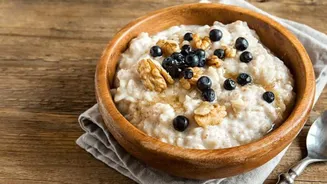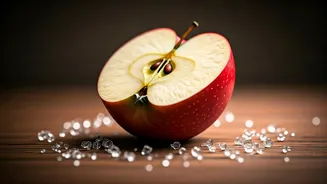Initial Curiosity and Buzz
The allure of mushroom coffee has swept across the health and wellness scene, promising an energy boost and health benefits. The editors, fueled by curiosity,
decided to embark on a taste test of two trending mushroom coffee brands. Before diving into the specifics of each beverage, the editors first familiarized themselves with the promises made by mushroom coffee. They explored the health benefits associated with the various mushrooms used, such as cordyceps and lion's mane, as well as the advertised cognitive enhancements and sustained energy levels that users often rave about. This research stage set the stage, allowing the editors to approach the experiment with a degree of healthy skepticism and a clear understanding of the claims they were about to evaluate. The editors wanted to discover whether the drink would truly meet expectations.
Brand One: First Impressions
The initial encounter with the first mushroom coffee brand offered a unique experience, a sensory journey. The editors were keen to describe the taste, appearance, and aroma of the first coffee. Did it deliver on flavor, or was it a mere novelty? The editors, with careful consideration, assessed the coffee. They analyzed how it stacked up against regular coffee and took notes on any immediate effects after consumption. This assessment included details such as the ease of brewing, the consistency of the final product, and its initial impact on energy levels or mental clarity. The editors documented their thoughts, seeking to provide a comprehensive evaluation for the readers. These aspects provided a solid base, enabling a better grasp of the coffee.
Brand Two: Taste Test
The second mushroom coffee brand faced intense scrutiny in comparison to the first. The editors took a different approach, evaluating the taste and sensory attributes. They described the coffee's appearance, smell, and any distinct notes that emerged upon sipping. The editors compared this brand's texture and mouthfeel with the one from the previous brand. The comparison was designed to reveal any advantages the second brand might possess, such as a more pleasant taste or a smoother finish, in comparison. The editors provided an honest review of the second brand to determine which one better aligns with a good cup of coffee. The overall aim was to present a balanced comparison.
Effects and Outcomes
Beyond the sensory experience, the editors focused on the claimed benefits of mushroom coffee. They assessed the drinks' capacity to increase energy levels and improve cognitive function. Did the coffee offer a sustained energy boost without the jitters associated with regular coffee? Did they experience enhanced focus or clarity of thought after consumption? The editors kept detailed records of their experiences, noting when they consumed the coffee, the time frame, and any noticeable effects. These observations, combined with personal observations, helped assess the effectiveness of each brand. The editors wanted to determine whether the mushroom coffee lived up to its reputation and if it provided any noticeable advantages over traditional coffee.
Final Verdict and Insights
The editors provided their overall assessment, summarizing the strengths and weaknesses of each brand. They shared whether they would consider incorporating mushroom coffee into their daily routines. The evaluation included a breakdown of the overall experience, considering both flavor and potential health advantages. The editors also acknowledged factors that might have influenced their opinions, such as personal preferences and expectations. The insights and recommendations provided guidance to the readers. The editors shared their final thoughts on the value of mushroom coffee as a beverage option. Readers could consider the information to decide whether or not to give mushroom coffee a try. The intent was to give a balanced view for an informed decision.









